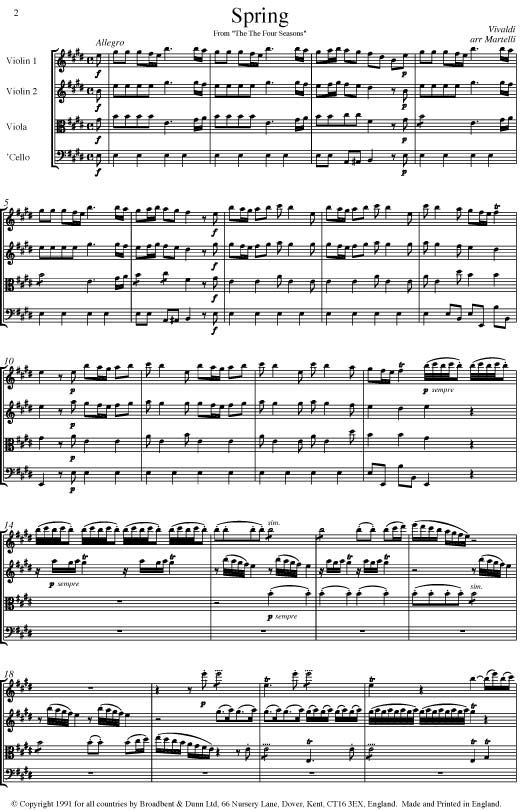



Joy and warmth are replaced by cold, sleepy, and dull autumn, which is reflected in the change of dynamics and tempo, which becomes slow and quiet. At the end of the movement, a gradual deceleration and “fading” of the melody are also heard, which prepares the listener for the next part. The first movement reflects the joy of a still warm spring and harvest festival hence, a listener can hear a fast rhythm in the theme performed by the orchestra and solo violin. In the Third Concerto, which depicts autumn, the tempo, as well as in parts of spring, changes from fast to slow and again to fast. In the third part, the viewer can also hear the use of a monophonic texture and its contrast with a polyphonic texture, and although it does not sound long, it is expressive. The movement begins with a slow Adagio and then turns into a fast Presto, while the solo of violin in piano transit in fortissimo in the final phrase, since the whole orchestra creates the melody. The second movement is also filled with contrasts in dynamics and texture. This feeling creates a fast pace, a vibrating melody, as well as a unison of sounds that are simultaneously picked up by the entire orchestra.

The final contrasting phrase sounds like a summer storm that suddenly broke out on a summer day. The first movement is filled with a combination of melodies with various tempo and timbre, which displays the sounds of birds. It also consists of three movements that display different stories. The Second Concerto was written to convey the mood of summer with its vibrant and contrasting days. The dynamics of movements also change, so in the first and third movements, musicians mainly use forte to show the liveliness of the awakening nature, and the second movement sounds in piano by demonstrating the still sleepy mood of spring. In addition, the contrasts of the solo and the repeated main theme make it possible to hear different manifestations of spring nature: birds singing, a breath of wind, the murmur of a stream. In the first movement, one can hear the main theme repeating the orchestra after each solo, which adds fullness and completeness to the melody. The First Concerto consists of the first movement in a fast tempo, a second slow, and a third fast again, reflecting the changing mood of spring. The symphony consists of 12 movements, which are divided evenly into four seasons, the mood of which the author wanted to convey.


 0 kommentar(er)
0 kommentar(er)
